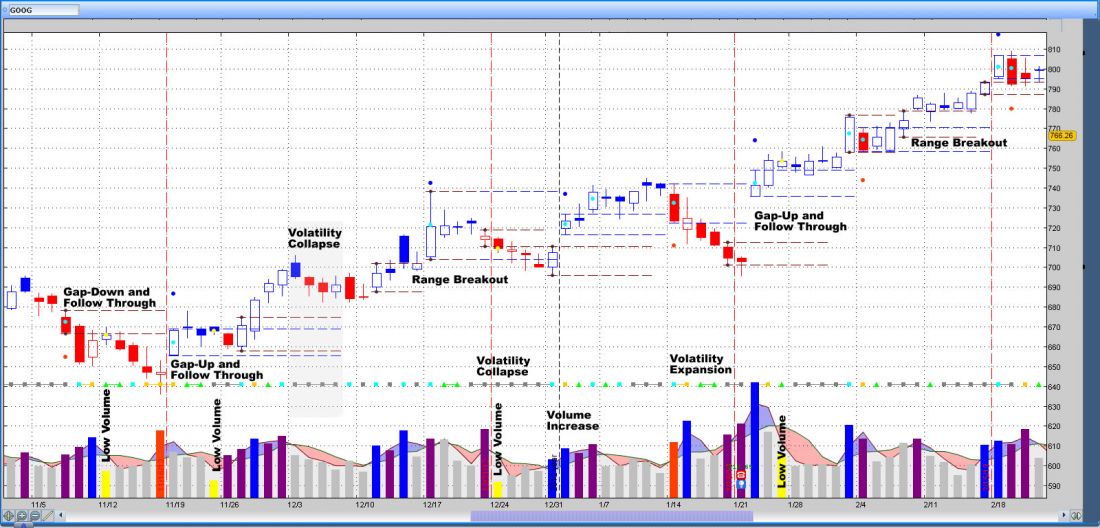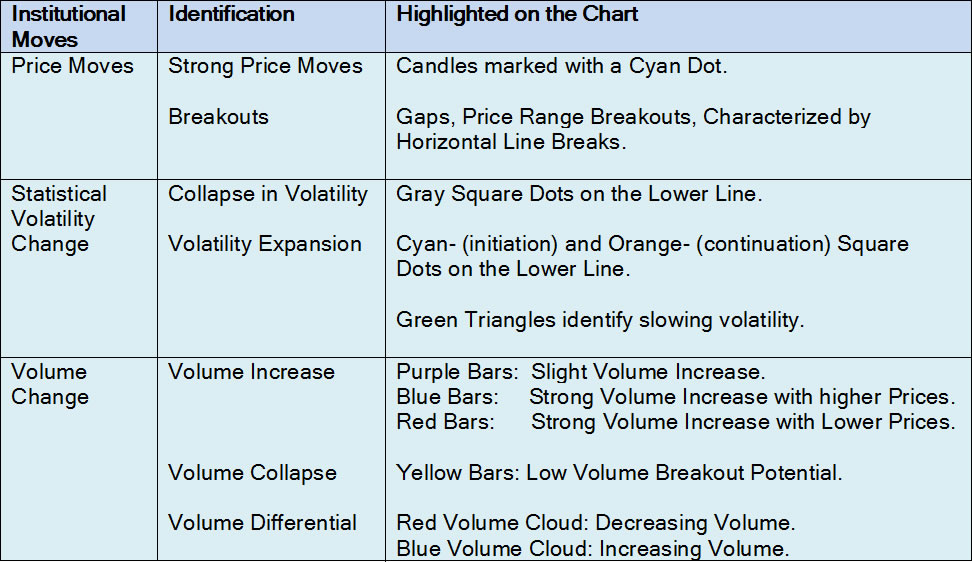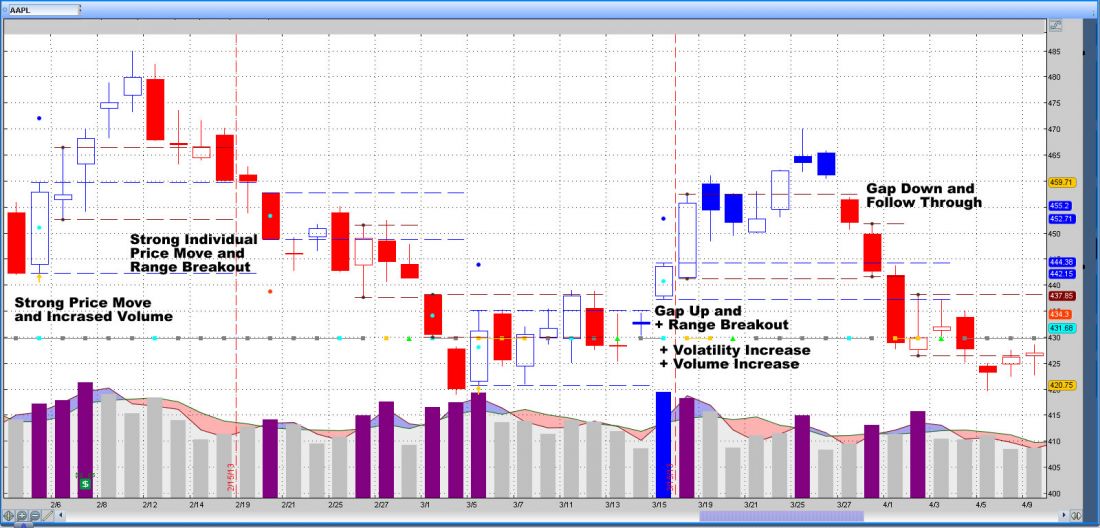Spotting and following “smart money moves” provides a wonderful investment/trading strategy for private investors.
Identifying and trading along with institutional money moves works for all asset classes: stocks, commodities, currencies, and Treasuries. In this article, we focus on stocks.
Who are institutional investors and what is their core focus?
Fig 1: Key Institutional Investors

Table-1 shows: “Prop Traders” also act as “Liquidity Providers”: On one hand, some institutions trade their own money and on the other hand, they are providing liquidity. Hence, if a core “Prop Trading Company” wants to accumulate or dispose stocks, they have to bypass their key competitors. Even so, they try to hide their actions, the other market forces spot what is going on and trade along with it – and you can do the same.
Fig 2: GOOG – Spot Institutional Money Moves

Fig 3: Spot Institutional Money Moves

The highlighted trade situations on the chart identify that:
• Price consolidation is going hand in hand with decreasing volumes.
• Price expansions to the up- or downside is going hand in hand with increasing or collapsing volume.
Putting it all together provides you a chart-based strategy to trade right at the highlighted instances:
• With the direction of the price range breakout.
• With the Gap.
• With a Strong Directional Candle.
Fig 4: AAPL Trading Institutional Price Moves

Over the years, I developed multiple indicators and studies, which highlight institutional price moves by spelling out potential trade entries and exits.
After we clarified when to initiate a trade, the next question is which stocks to trade?
To follow institutional price moves, pick stocks which are widely held by multiple institutions. When you select the S&P 100 and the NASDAQ 100, you already found the core of the trading opportunities. Each of those stocks is held in most mutual funds and by multiple institutional investors.
The next challenge is to find trading opportunities. We developed special scanning programs; however, you can find tradable stocks by picking those with a stronger price move than the referring index:
– For the S&P 100 choose OEX.
– For the NASDAQ 100 choose QQQ.
Stocks to trade are those with an above or below the comparison index price-moves.
To be a successful private investor, the skills and experience for being able to make money when the markets go up and down is essential.
When a major price move occurs, expect to trade one direction for no more than 10 trading days and after that expect a reversal. If you want to catch a longer trend trade, trail your stop:
• To the upside: Below the low of the prior candle.
• To the downside: Above the high of the prior candle.
Why is an institutional follower strategy successful?
• Private investors have the advantage of speed: They can enter and exit entire positions, while Institutions need a longer time to get in and out of a position by sheer size and SEC (Security Exchange Commission) regulations.
• By the smaller size, you have an easier way to leverage and hedge trading positions.
• With a short- rather than long-term strategy, money can be made on up- or down-moves.
• Short-term trading allows for constantly generating and compounding interest, which gives you accelerating returns.
• With modern technology on hand and competitive commissions, the private investor can access all markets real time, similar to institutions.
= = =
Learn more about free reports from NeverLossTrading here or schedule a consultation at contact@NeverLossTrading.com.
= = =
Related Reading:
Find Your Edge: Trade Like Institutional Traders
Understanding Institutional Order Flow and Supply and Demand Trading Strategy




